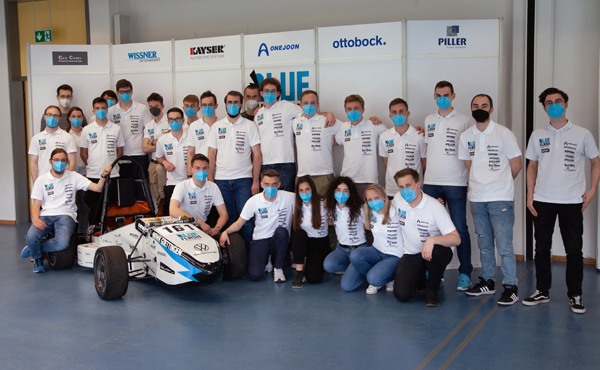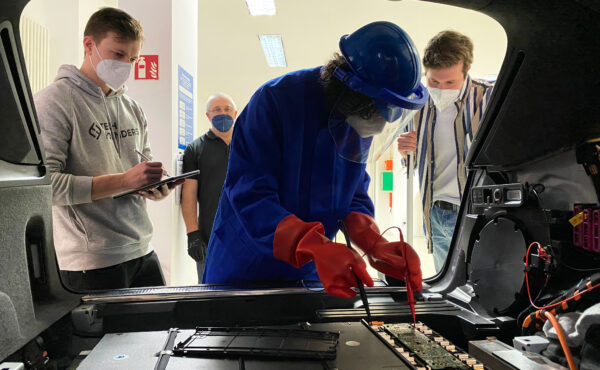High-voltage batteries deserve a second chance
Changes taking place in the vehicle industry mean that vehicle manufacturers are now putting more and more electric vehicles on the road. No matter whether these vehicles are small cars or SUVs, they all have one thing in common – they use batteries.
So what kind of storage do they use?
Modern electric vehicles typically use lithium-ion cells, but these have one distinct disadvantage. Their capacity diminishes over time. In concrete terms, this means that the vehicle’s range decreases significantly as the capacity of the high-voltage energy storage system diminishes. However, this does not mean that these high-voltage batteries are worthless – far from it, in fact. When used as second life batteries, they can continue to a provide useful service over a long period of time.
Residual capacity gives batteries a second life
HV batteries that have been mustered out from vehicles because their capacity is too low do not become useless or worthless as a result. When these energy storage units are removed from vehicles, they normally have a capacity of around 70-80% of their original energy content. Despite the fact that the capacity of these batteries is no longer enough to use them in vehicles, disposing of them makes neither ecological nor economic sense. These high-voltage batteries can continue to be used in a stationary setting in their second life.
Stationary operation has the advantage that the battery is used far less than in a car with its constant recuperation phases and irregular charging cycles. Stationary operation is much steadier and charging and discharging only takes place slowly, which is much gentler on these high-voltage batteries. A simple comparison illustrates this clearly. It is natural for the energy consumption of an electric vehicle accelerating along the motorway to overtake to be much higher than that of an oven slowly heating up in your home.
So what form can a second life take?
High-voltage batteries from Audi test vehicles have found a second life in Wendelstein, near Nuernberg, in Germany. Here, two fully air-conditioned containers, with a floor space of around 75 square metres, can be found housing 84 battery storage units. With a total storage capacity of one megawatt hour (1000 kWh), they can supply around 100 average households with electricity for a day.
What does that mean in real terms? In real terms, it means that decommissioned high-voltage storage units can be used to compensate for deviations between electricity production and consumption. For example, on sunny and windy days, excess energy from wind and solar power plants can be temporarily stored in these batteries and supplied when needed.
This means that a battery storage system can continue to be used for up to 10 years even after its service life is over in a vehicle.
High-voltage battery recycling methods after their second life
So what happens to high-voltage batteries once they have actually reached the end of their cycle? Well, they have to be recycled. Generally speaking, two possible methods exist for breaking down these energy stores, which often weigh up to a ton, into their individual components. Firstly, thermal melting and, secondly, the mechanical comminution and chemical extraction of the raw materials.
During thermal processing, the battery cells are melted down. Because the metallic components have different melting points, they can be easily separated from one another. This method can be used to recover substances such as cobalt, nickel and copper, as well as lithium in a further step. A recycling share of 60 to 70% on average is possible. Cobalt and nickel are even up to 95% recyclable. However, this method cannot be used to recycle graphite and aluminium. The process used is also subject to criticism because it requires a lot of energy.
An alternative procedure involves shredding, i.e. the mechanical shredding of the battery modules in a closed container. The introduction of nitrogen prevents the materials from igniting. This method allows aluminium and copper to be recovered in their pure form, as well as a high proportion of graphite, manganese, nickel, cobalt and lithium. Around 96% of the battery components can be returned to the raw material cycle this way.
Thanks to second life and effective recycling methods, even large HV batteries from electric vehicles can be put to good use after their service life is over in a vehicle.
See how we discover smart ideas for today and in the future!



